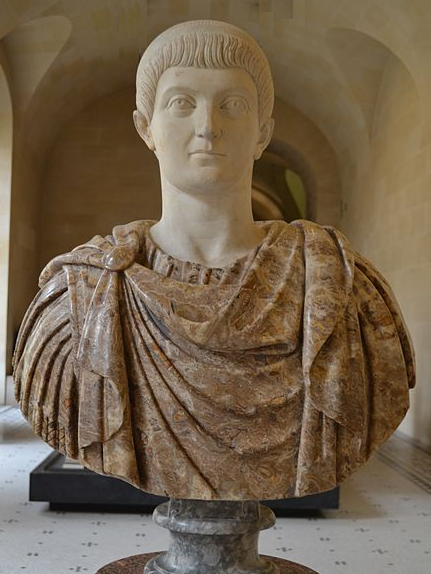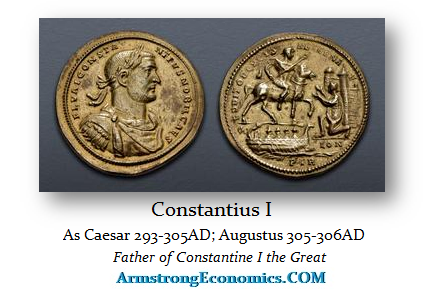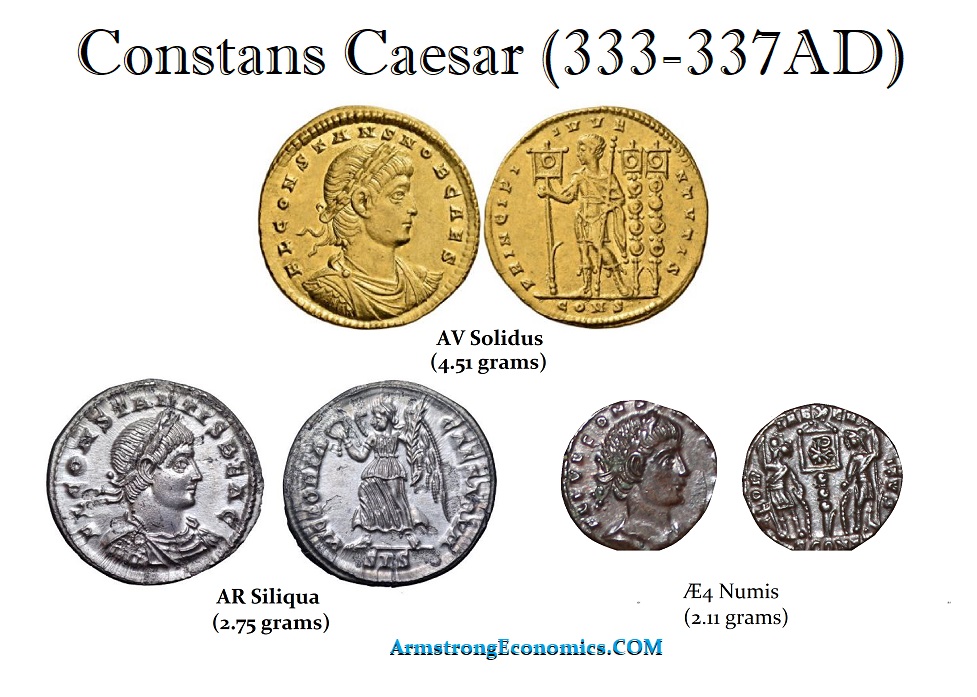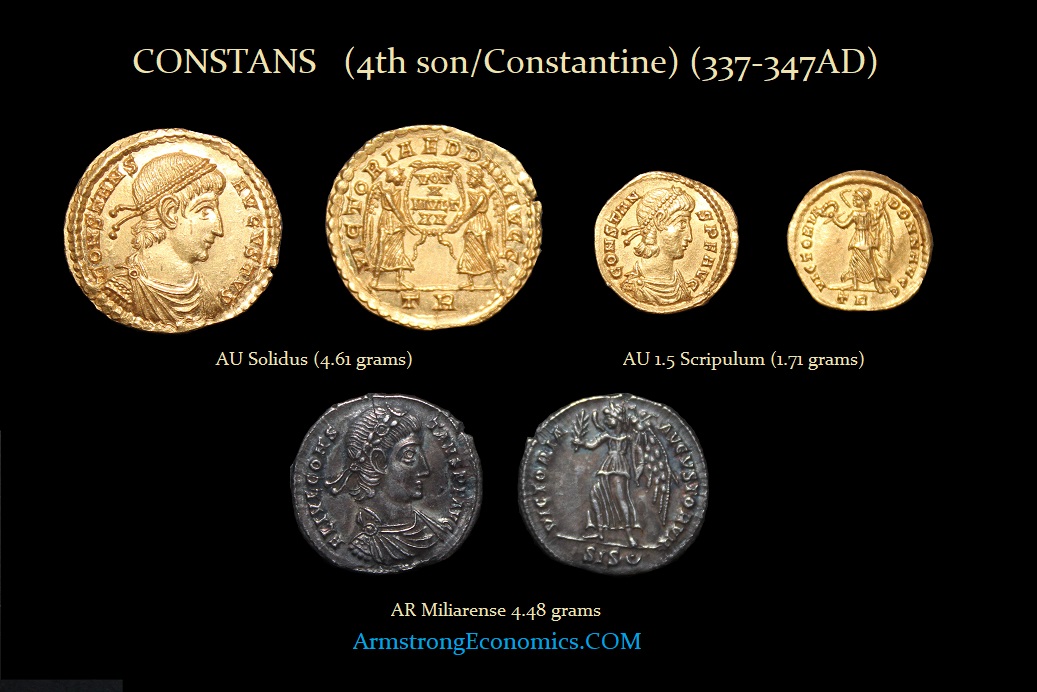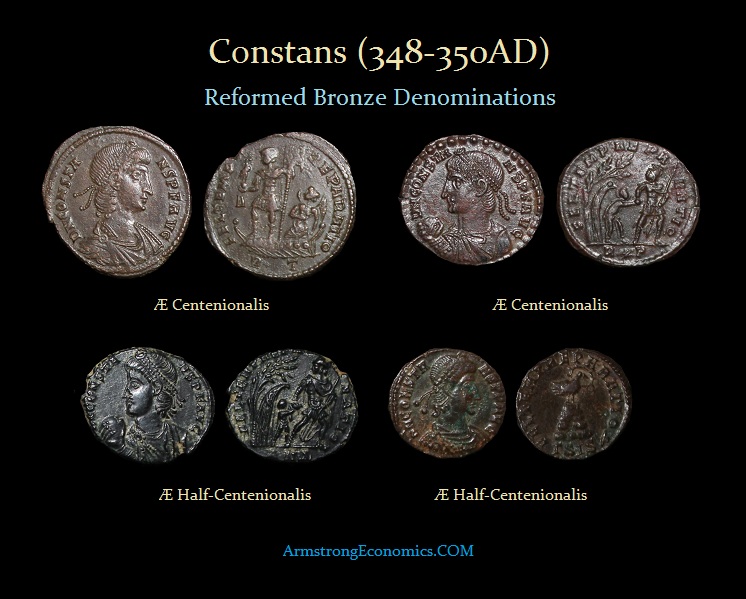Constans
As Caesar 317-337 AD
As Augustus 337-340 AD
Youngest son of Constantine the Great
Flavius Julius Constans was the youngest of the three sons of Constantine I the Great and Fausta and was born in 320AD (or 323). Given the rank of Caesar in 333AD, he received Italy, Africa, and Illyricum as his share of the imperial inheritance following his father’s death in 337AD when the empire was carved up among the three sons of Constantine I. His victory over his eldest brother, Constantine II, in 340AD, gave him control over the entire Western half of the Empire after reigning for a decade as the colleague of his brother Constantius II, Emperor in the East.
In the following years, Constans campaigned against the Franks, and in 343AD, he visited Roman Britain, where his Grandfather, Constantius I (293-206AD), had fought and died. Constans was the last legitimate emperor to do so.
On January 18th, 350AD, the general Magnentius declared himself emperor at Augustodunum (Autun) with the support of several court officials, including Constans’ former praetorian prefect of Gaul – Fabius Titianus. Apparently, there was extensive gossip with regard to his personal life concerning suspected homosexuality. This became rather prominent because he never married. It was even rumored that he retained captive barbarians to satisfy his homosexuality. We do not know if this was true, but it was used to fester a rebellion against him. Constans did pass legislation against homosexuality and used that to dispute the rumor.
Constans was on a hunting trip to Hispania when supporters of Magnentius cornered him in a fortification in Helena (Elne) in the eastern Pyrenees of southwestern Gaul. This is where they killed him when he sought sanctuary in a temple. Ironically, there had been an alleged prophecy at his birth that Constans would die “in the arms of his grandmother.” This may have been made up with hindsight, for the place of his death was named after his grandmother Helena.
Constans’ name would later be erased from inscriptions in places that recognized Magnentius as emperor. An exiled bishop Athanasius I of Alexandria (c. 296/298–373), said of Constans he was “the most pious Augustus… of blessed and everlasting memory.”
Monetary System

Mints: Alexandria, Antioch, Arelate, Aquileia, Constantinople, Cyzicus, Heraclea, London, Lugdunum, Nicomedia, Rome, Siscia, Thessalonica, Treveri
Obverse Legends:
As Caesar
FL IVL CONSTANS NOB C
FL CONSTANS NOB CAES
FL IVL CONSTANS NOB CAES
As Augustus
CONSTANS AVGVSTVS
CONSTANS P F AVG
CONSTANS AVG
D N CONSTANS P F AVG
Monetary Reform
In 348 AD, Constans, along with his co-emperor brother Constantius II, carried out a major reform of the bronze coinage system. The small, drastically reduced follis (AE4) denomination was discontinued. A new series of bronze coins was introduced based upon a unit measuring 23mm in diameter known as the centenionalis. A half denomination was also introduced, thus providing two bronze denominations. At first, the reform coinage typically bore the reverse inscription “FEL TEMP REPARATIO.”
DENOMINATIONS
As Caesar
AU Solidus (4.50 grams)
AR Miliarense (4.50 grams)
AR Siliqua (3.25 grams)
AE3/4
As Augustus
AU Solidus (4.50 grams)
AU Semissis (2.25 grams)
AU 1½ Scripulum (1.65 grams)
AR 3 Miliarense (13.50 grams)
AR Miliarense (4.50 grams)
AR Siliqua (3.25 grams)
AE4
Post-Reform Bronze
AE Centenionalis
AE ½ Centenionalis
Medallions
AR 4 Siliquae (13 grams)

